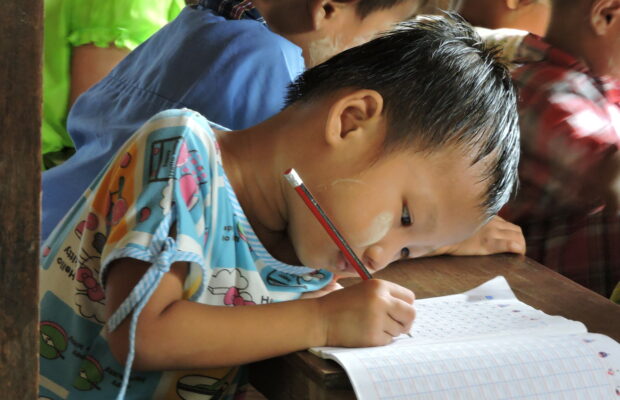Brighter Tomorrow: Help the children of Babag, Philippines
In the mountains of Cebu, child sponsorship has the power to send children to school safely and encourage them to chase their dreams.
Many children in Southeast Asia grow up in impoverished rural locations. They have to work in the fields from a very early age, as this is often the only way that their parents can ensure that there is food to put on the table. Exhausted by their labour, they often find it impossible to concentrate on their studies when they do get to go to school.
Weighed down by debt, families cannot afford the fees required for secondary school, let alone university. In Southeast Asia, secondary schools and universities are to be found only in the biggest towns, and sometimes only in the capital city. Families who live far away, deep in the countryside, are often unable to meet the cost of boarding and lodging in addition to the school fees.
Sponsored children can afford to buy what they need for school (paper, pens, books etc), to pay their bus fares, and to fund the extra lessons they need to attend if they are to pass their exams. What is more, their families are compensated (often in the form of sacks of rice) for the fact that their children are no longer able to work to put food on the table.
Children of the Mekong sponsor children to live in boarding houses and education centres. This provides children from families who live in the most remote locations the chance to continue their schooling. Therefore, the children can study in peace, close to their schools and universities, without having to worry about their financials.
Young people who live at the centres are encouraged to give tuition, free of charge, to children in villages where provision is lacking. This is one way in which children sponsored by Children of the Mekong are able to give something back, working for the common good and future wellbeing of their country.
When you sponsor a child from remote areas, you give them the chance to build their own future and to break the circle of poverty.

In the mountains of Cebu, child sponsorship has the power to send children to school safely and encourage them to chase their dreams.

In the small town of Liboro, Philippines, sponsorship has the possibility of transforming the lives of young people by sending them to school.

In this neglect community not far from Bangkok, sponsorship is vital in supporting the basic needs of families, enabling their children to attend school. […]

In this isolated region in the north of the country, it is difficult if not impossible for the poorest families to send their children […]

It is a real challenge for children in Tedim to go to school. This child sponsorship is a unique opportunity for these children to […]

Sponsor a child from Myanmar

The Kyauk Tan centre, located east of Yangon, caters to children from communities that live on the margins of development. One-third of the children […]
Learn more about our privacy policy here.


Join Us in Enhancing Preschool Facilities for Ethnic Minority Children in Gia Lai, Vietnam. Donate now
Funds raised so far: 99%

Samrong is located in Oddar Meanchey province, in Northwest Cambodia. Education opportunities are severely limited and dropout rates remain high. Support this project
Funds raised so far: 51%

The village of Huay Duea in Laos is located 70 kilometres north of Vientiane.

Who are the Ede, or Rhade people, an ethnic minority group in Vietnam? Text by Carla Pelosoff
Support Children of the Mekong’s initiatives for rural and isolated populations in Southeast Asia
